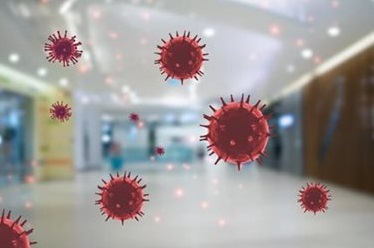Nikhil Prasad Fact checked by:Thailand Medical News Team Jan 11, 2025 11 months, 1 week, 2 days, 17 hours, 33 minutes ago
Medical News: Researchers Unveil Impact of Humidity on Virus Survival
A group of scientists from Syracuse University, New York, has conducted an in-depth study investigating how humidity influences the persistence of viruses on various surfaces in indoor environments. The team explored this topic using Phi6, a bacteriophage often employed as a surrogate for SARS-CoV-2 due to its similar structural features. Researchers included experts from the Departments of Biomedical and Chemical Engineering, Mechanical and Aerospace Engineering, Civil and Environmental Engineering, Biology, and the BioInspired Institute.
 SARS-CoV-2 Viral Persistence in Indoor Settings
The Importance of Humidity in Viral Transmission
SARS-CoV-2 Viral Persistence in Indoor Settings
The Importance of Humidity in Viral Transmission
Understanding how viruses behave in indoor spaces is critical for public health, especially in light of the COVID-19 pandemic. Viral particles can be transmitted through direct contact, airborne droplets, or contaminated surfaces (fomites). Among these, fomite transmission has often been overlooked, despite evidence of its significant contribution to viral spread.
This
Medical News report dives into the research findings and examines how relative humidity levels impact viral survival on different materials.
Key Findings from the Study
The researchers simulated indoor environments using a full-scale 29 m³ environmental chamber. By meticulously controlling the humidity levels and measuring the infectivity of aerosolized Phi6 on various surfaces, they uncovered some intriguing patterns:
-Humidity and Aerosolized Viruses: Viral infectivity followed a V-shaped trend across varying humidity levels. At 25% relative humidity (RH), the virus showed the highest infectivity. However, as RH increased to 75%, infectivity decreased significantly. Surprisingly, at 85% RH, infectivity levels slightly rebounded.
-Material Properties Matter: Non-porous materials, such as glass and stainless steel, allowed viruses to remain viable longer than porous materials like wood and gypsum board when droplets were applied. However, when the virus was aerosolized and deposited, this distinction disappeared. Regardless of material type, high humidity conditions led to faster viral inactivation.
-Time and Viral Decay: Prolonged exposure to higher humidity levels resulted in rapid inactivation of the virus, particularly at 75% RH, where complete viral inactivation occurred within 1.5 to 2 hours. This contrasts with the slower decay observed at lower humidity levels.
Implications for Indoor Spaces
These findings have significant implications for managing virus transmission in places like schools, offices, and healthcare facilities. The study highlights that:
-Optimizing Humidity Levels: Maintaining intermediate to high humidity levels (above 45% RH) can help reduce the persistence of viruses in indoor air and on surfaces.<
;br />
-Role of Material Selection: While porous materials may seem less risky for viral transmission, aerosol deposition can negate this advantage. Thus, strategies targeting airborne virus control should not rely solely on material properties.
-Air Circulation and Ventilation: Poorly ventilated environments exacerbate the risks of prolonged viral persistence, particularly at lower humidity levels. Improved air exchange systems can mitigate this issue.
Conclusion
The research underscores the need for a multi-faceted approach to minimize viral transmission indoors. This includes maintaining optimal humidity, using antiviral materials, and enhancing air circulation.
The study findings were published in the peer-reviewed journal: PLOS ONE.
https://journals.plos.org/plosone/article?id=10.1371/journal.pone.0313604
For the latest COVID-19 News, keep on logging to Thailand
Medical News.
Read Also:
https://www.thailandmedical.news/news/with-sars-cov-2-actually-hyperendemic,-mask-serves-no-purpose-now-rather-a-concerted-clean-air-strategy-and-prophylactics-are-needed-urgently
https://www.thailandmedical.news/news/u-s-study-shows-how-deploying-ultraviolet-air-purification-systems-in-nursing-homes-reduces-risk-of-covid-19-infections
https://www.thailandmedical.news/news/u-s-study-shows-that-upper-room-germicidal-ultraviolet-c-irradiation-ur-guv-devices-effective-in-eradicating-aerosolized-sars-cov-2-in-enclosed-areas
https://www.thailandmedical.news/news/u-s-study-shows-that-exposure-to-air-pollutants-can-exacerbate-the-effects-of-a-covid-19-infection
